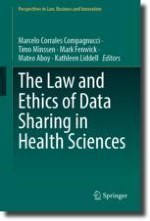2024 | OriginalPaper | Buchkapitel
Enabling Secondary Use of Health Data for the Development of Medical Devices Based on Machine Learning
verfasst von : Lea Köttering
Erschienen in: The Law and Ethics of Data Sharing in Health Sciences
Verlag: Springer Nature Singapore
Aktivieren Sie unsere intelligente Suche, um passende Fachinhalte oder Patente zu finden.
Wählen Sie Textabschnitte aus um mit Künstlicher Intelligenz passenden Patente zu finden. powered by
Markieren Sie Textabschnitte, um KI-gestützt weitere passende Inhalte zu finden. powered by
